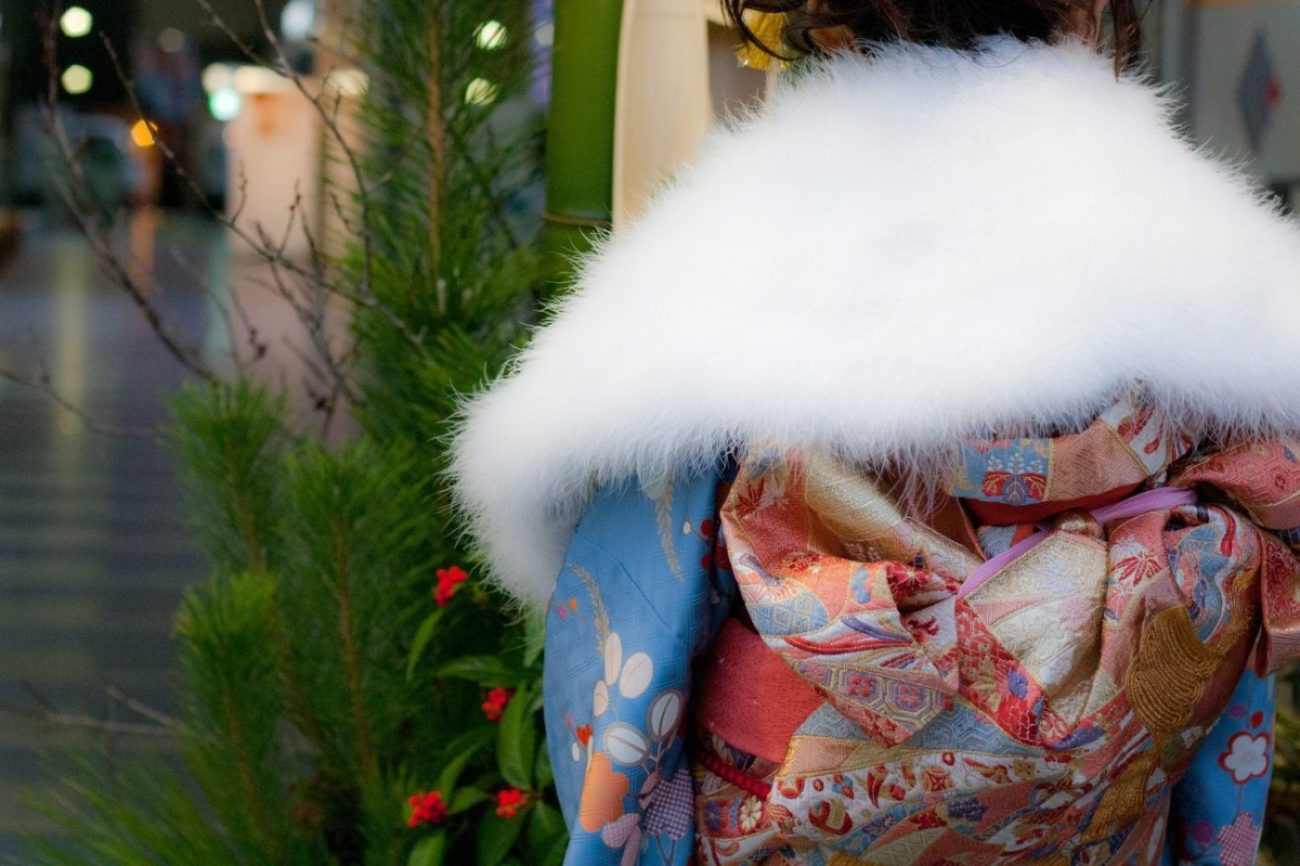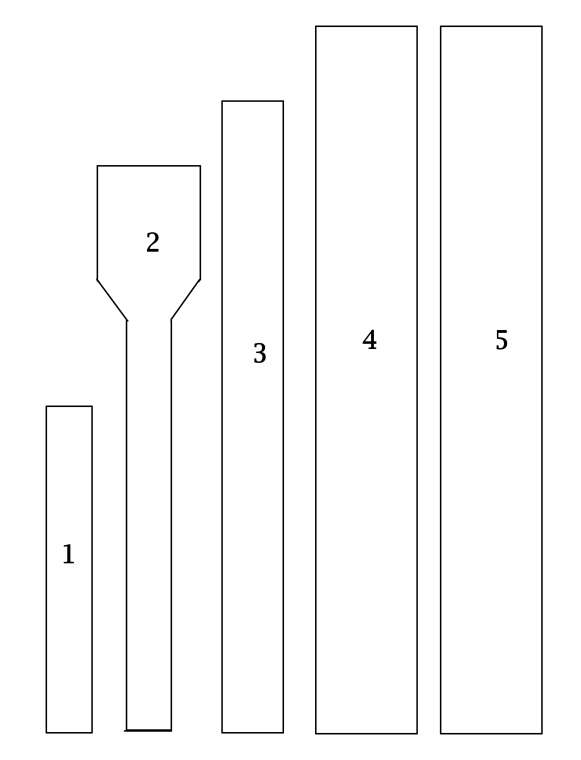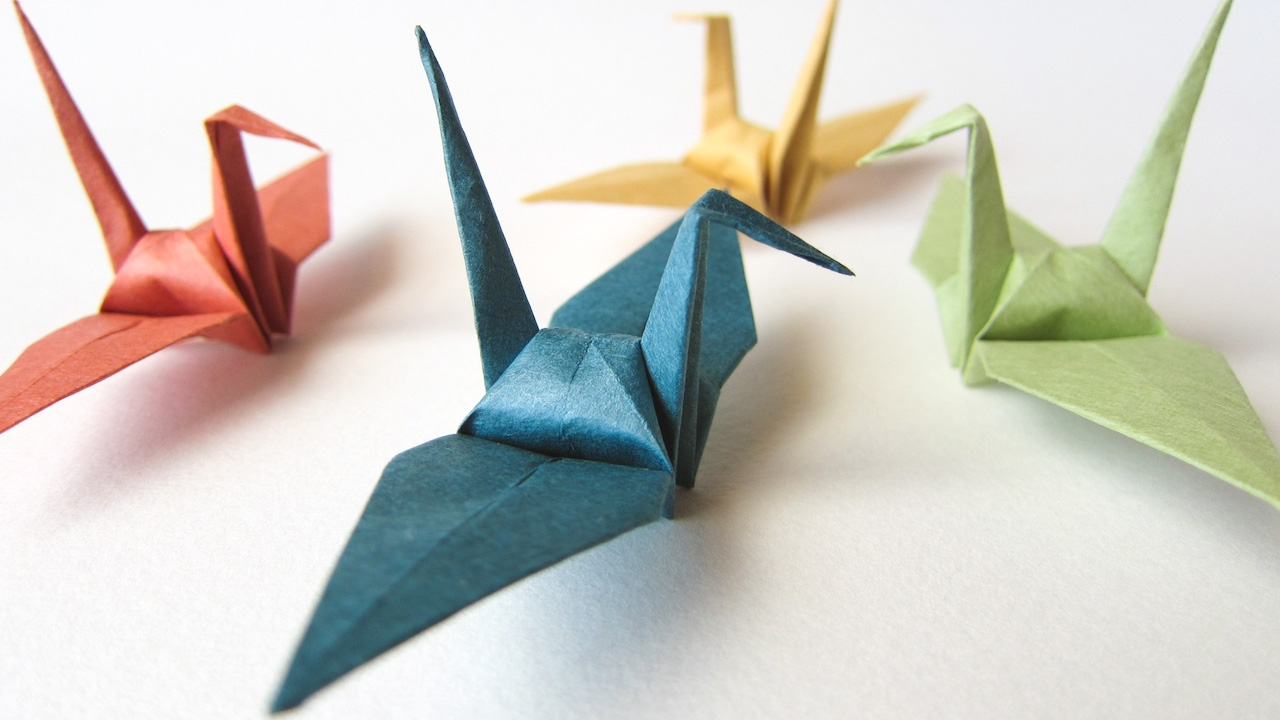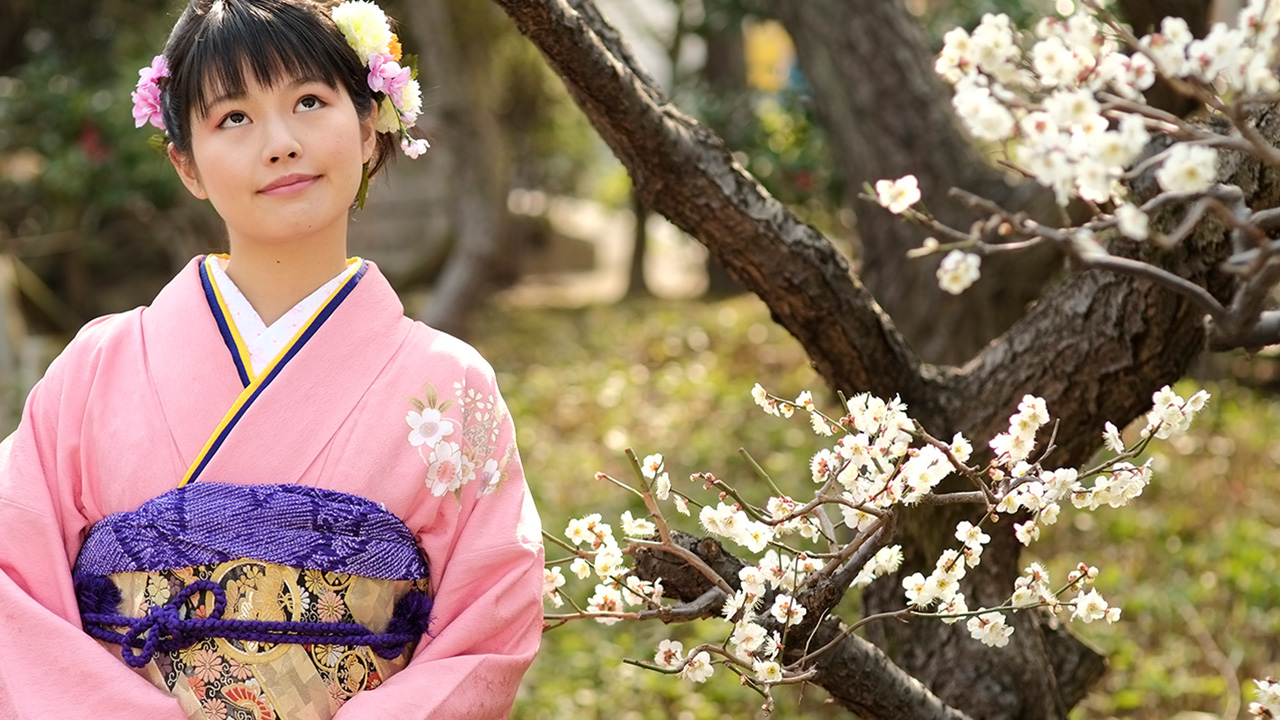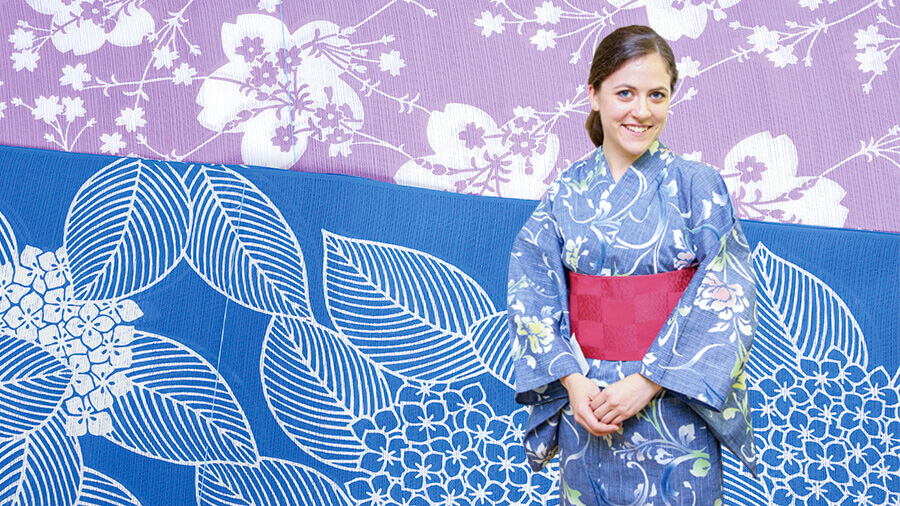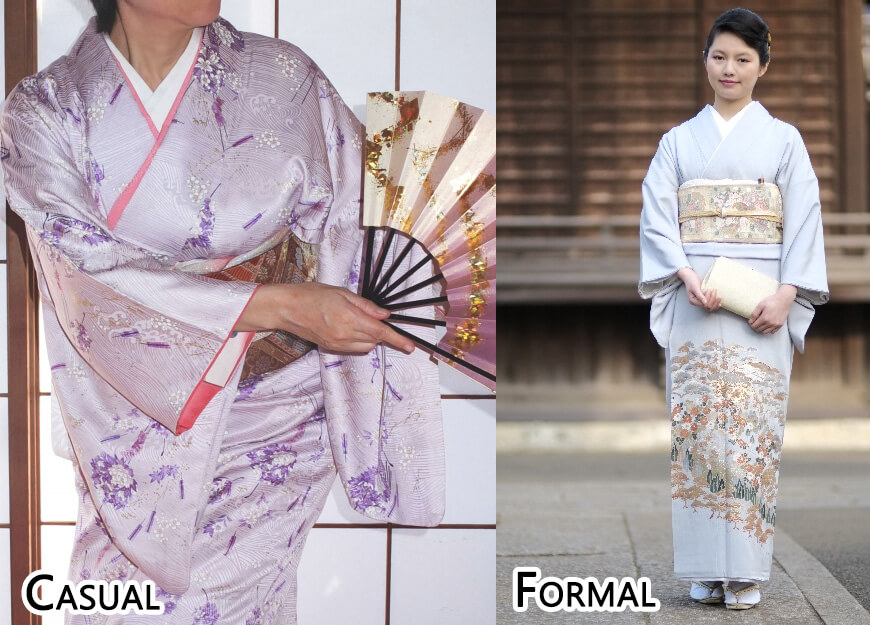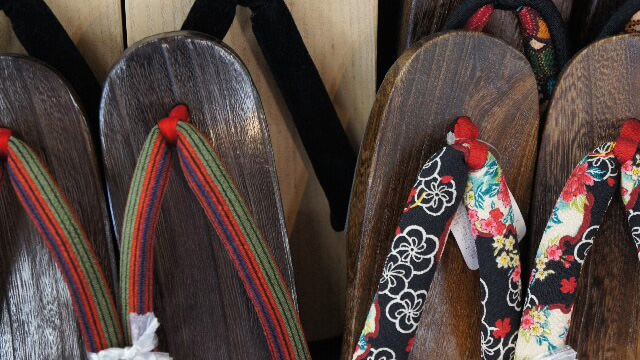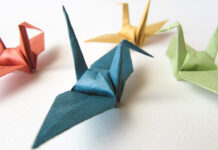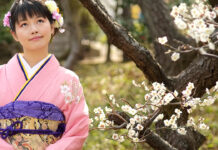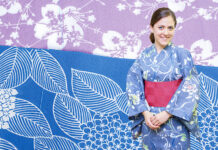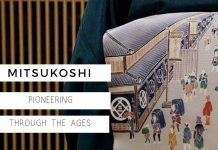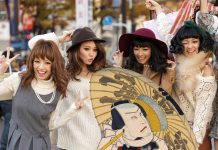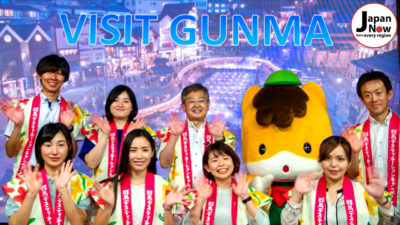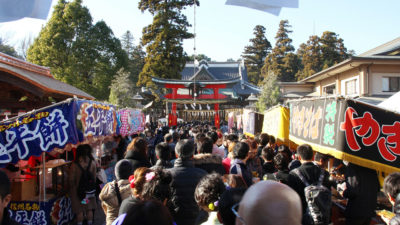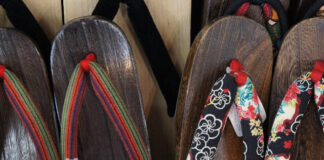You may know about all the different styles and types of Japanese kimono, but how do you tie them to achieve the pristine elegance of this famed traditional Japanese wear? That is where the kimono obi knot comes in. The main purpose of the obi knot is to keep the kimono closed and secure. Kimono obi belts are usually made out of satin or silk material. Both women and men wear kimono obi to secure the kimono, but a kimono obi for women are much longer than kimono obi for men. There are many ways to tie kimono obi knots and a variety of accessories to add to the elegance of the Japanese kimono.
To learn more about the basics of Japanese traditional wear, check out our overview on the many different kimono types first. You can read the article ”Know Your Kimono: 9 Different Kimono Types”.
There are 5 main types of kimono obi knots:
- Tsuke Obi
- Nagoya Obi
- Hanhaba Obi
- Fukuro Obi
- Maru Obi
Just as with the kimono, there is an obi for every occasion. And every kimono needs a certain type of kimono obi. We will take a look at the most common obi. Then, of course, you can find out the proper event to try wearing a kimono wrapped with a beautifully tied kimono obi.
Kimono Obi 1: Tsuke Obi
Also known as the ‘easy obi’, it was invented to help older ladies dress themselves easier. To avoid having to learn any difficult tying techniques, separate knots and bows can be purchased. The separate parts of the tsuke obi are already tied. Usually, tsuke obi have a clasp to quickly connect or undo them. Nowadays it is very popular for that reason. It can be any color and/or pattern, but generally isn’t considered a formal obi. Even beginners can try this kimono obi. Visitors to Japan may even want to try this on while walking down traditional streets taking photos.
Kimono Obi 2: Nagoya Obi
Designed by a lady from Nagoya, this obi type was made to make tying the typical “Taiko Musubi” knot easier. It can be a formal or casual obi depending on the colors used. It goes without saying, if there’s gold thread, the obi is almost always formal. Most of the Nagoya obi is thin which wraps around the waist. There is also a wider area that is used for making the bow.
Interestingly, the Nagoya Obi does not have a printed design completely covering the material. Instead, only the front and on the part where the taiko knot is visible as a design. Since the Nagoya obi was originally used as everyday wear, it can never be part of a truly ceremonial outfit. However, it is still very beautiful.
Kimono Obi 3: Hanhaba Obi
Hanhaba obi is an unlined and informal obi that goes with a yukata or an everyday kimono. Hanhaba obis are very popular these days for use with yukata. Since this is an informal obi it allows some self-invented styles with decorative ribbons and charms. Because tying this obi is relatively easy many Japanese people wear it during festivals.
If you are in Japan during the country’s hot summer months, you’re likely to see crowds of young people walking the streets from the late afternoon wearing yukata with this kimono obi.
Kimono Obi 3: Hanhaba Obi
This is the most formal kimono obi today. It can show off its beauty in the Taiko knot, but it is also capable of many other styles. It makes an appearance during ceremonies and celebrations. A fukuro obi is often made so that the part that will not be visible when worn is of smooth, thinner and lighter silk. Kimono obis of this level of formality pair nicely with a Furisode. The obi knots are often very elaborate and big, making them elegant and feminine.
Kimono Obi 5: Maru Obi
A Maru Obi is the most formal kimono obi. An ornate pattern runs along the entire length on both sides. Maru obis were at their most popular during the Taisho and Meiji-periods. Their bulk and weight make the maru obi difficult to handle. Furthermore, mostly Geisha and Maiko wear these types of kimono obi. Another use for maru obi is as a part of a bride’s outfit or when bride-like formality is required. When a Maiko wears a Maru obi, the symbol of her Geisha house is visible on the bottom of the obi.
EXTRA: Children's Kimono Obi
Children wear either imitations of adult obis or softer versions. Additionally, the obi knots can be simple or elaborate. Usually, children’s kimono and obi are more decorated. Furthermore, the hairstyles and decorations for girls are more playful.
From popular culture to traditional culture, I’ve immersed myself in both. I love writing about tradition, history and sharing fun discoveries. If I’m not outside watching a festival parade I’m leisurely reading manga in kimono.

 0
0